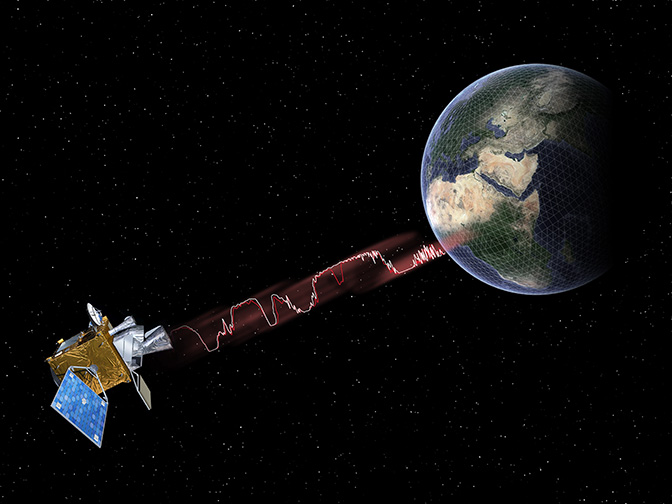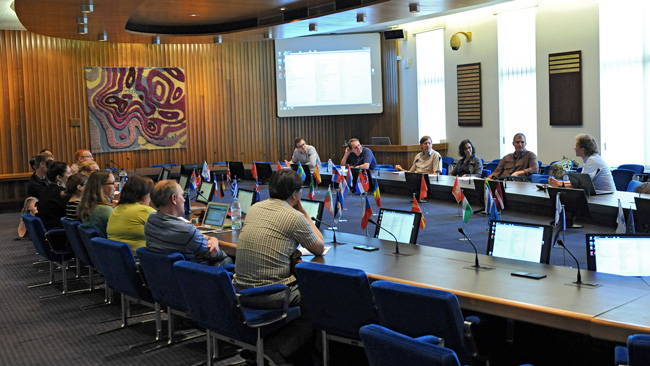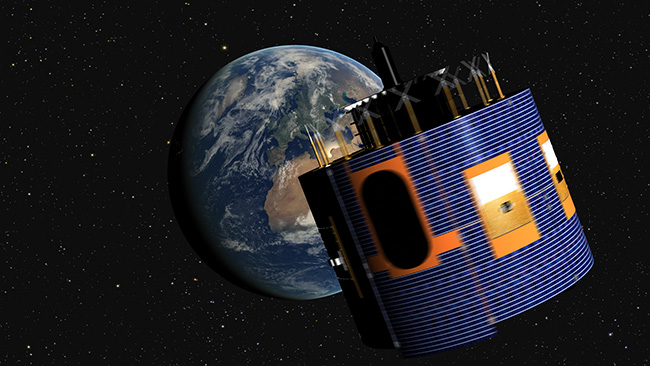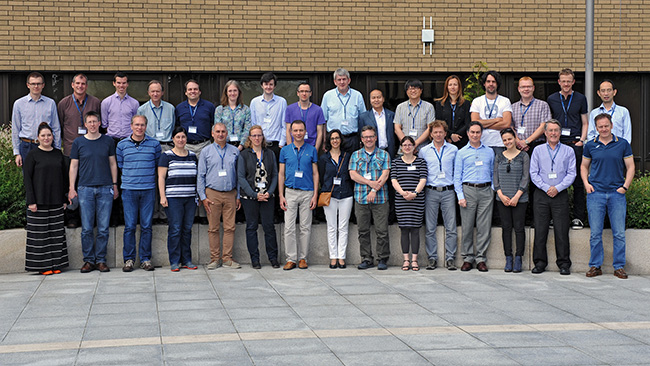

Work on exploiting new satellite instruments that will provide unprecedented details of the weather at different levels of the atmosphere is making good progress, an international meeting hosted by ECMWF has heard.
Forty-one experts attended the workshop on the ‘Assimilation of Hyper-spectral Geostationary Satellite Observations’ from 22 to 25 May 2017.
Speakers from Europe, China and the US explained the benefits of the new instruments as well as the technical issues that need to be addressed to maximise their potential for numerical weather prediction (NWP).
“The workshop was convened to assess our state of readiness and plot a roadmap for research and development to ensure that these unique observations will be exploited to their full potential,” ECMWF scientist Tony McNally said.
“Presentations showed how these data will provide new and highly detailed information on atmospheric wind, temperature and humidity. In particular, the high temporal sampling will allow us to observe rapid evolutions in the atmosphere and improve the forecasting of severe weather events.”

The participants split up into working groups to discuss different aspects of the new satellite observation capabilities.
Continuous observations
The new instruments will be carried by geostationary satellites, such as EUMETSAT’s Meteosat Third Generation (MTG) satellites to be deployed from 2021.
They include the ‘hyperspectral’ Infrared Sounder (IRS), which will for the first time provide a continuous stream of detailed vertical layer-by-layer information on wind, temperature and humidity.
The IRS obtains this information by measuring thermal radiation emitted from the atmosphere at very high spectral resolution.

Geostationary satellites, such as this Meteosat Second Generation satellite, are in orbit nearly 36,000 km above the Earth’s equator. (Copyright: 2012 EUMETSAT)
Polar-orbiting satellites already carry hyperspectral instruments. However, since they circle the globe, they may observe any particular area of the globe only once or twice a day.
Geostationary satellites, on the other hand, are located high above the equator and continuously observe the large circular region of the Earth below.
Prototype instrument
“Areas where our satellite data processing and assimilation systems will have to be significantly improved to use these data have also been identified at the workshop,” Dr McNally said.
The working groups made clear recommendations on how this can best be achieved.
“One key conclusion was that the community should make every effort to access and study data from the Chinese satellite FY-4A, which carries a prototype hyperspectral instrument.
“There was also broad agreement that the MTG-IRS is such a technologically challenging instrument to build and indeed use that very close cooperation between EUMETSAT and the NWP community is needed throughout the development phase and, critically, in the post-launch calibration period."

Experts from nine countries as well as from EUMETSAT and ECMWF attended the three-day workshop. The event was organised in collaboration with the EUMETSAT NWP Satellite Application Facility.
